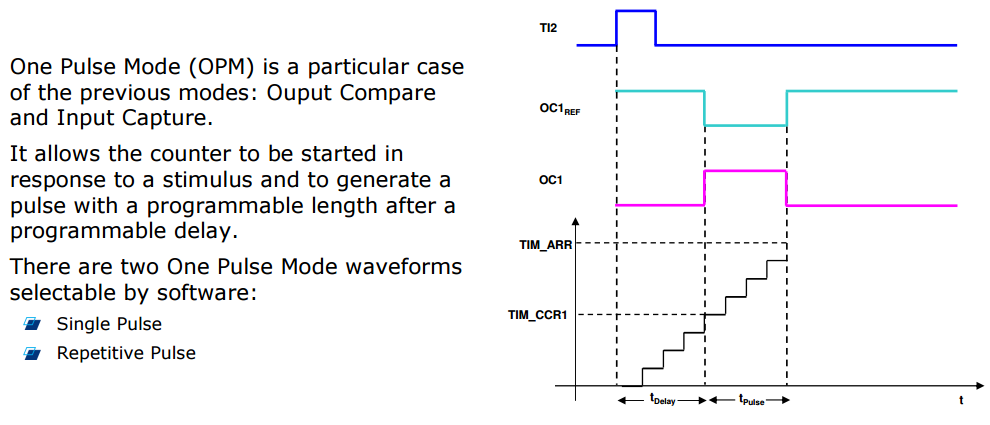
Sets the TIM Capture Compare Register value on runtime without calling another time ConfigChannel function. TIM_RESET_CAPTUREPOLARITY(_HANDLE_, _CHANNEL_) TIM_SET_CAPTUREPOLARITY(_HANDLE_, _CHANNEL_, _POLARITY_) TIM_RESET_ICPRESCALERVALUE(_HANDLE_, _CHANNEL_) TIM_SET_ICPRESCALERVALUE(_HANDLE_, _CHANNEL_, _ICPSC_) Indicates whether or not the TIM Counter is used as downcounter. _HAL_TIM_GET_IT_SOURCE(_HANDLE_, _INTERRUPT_) ((((_HANDLE_)->Instance->DIER & (_INTERRUPT_)) = (_INTERRUPT_)) ? SET : RESET)Ĭheck whether the specified TIM interrupt source is enabled or not. _HAL_TIM_GET_FLAG(_HANDLE_, _FLAG_) (((_HANDLE_)->Instance->SR &(_FLAG_)) = (_FLAG_))Ĭheck whether the specified TIM interrupt flag is set or not. _HAL_TIM_ENABLE_IT(_HANDLE_, _INTERRUPT_) ((_HANDLE_)->Instance->DIER |= (_INTERRUPT_)) Next we set PA6 which is connected to TIM3 as input capture._HAL_TIM_RESET_HANDLE_STATE(_HANDLE_) ((_HANDLE_)->State = HAL_TIM_STATE_RESET)

Code:įist we set PA5 as output compare to toggle the LED at rate of 0.5Hz (from here) We shall use OLED display to display time base as following:Īlso, a jumper wire shall be connected between PA5 and PA6 (D13&D12 in case of F411 Nucleo).
#STM32 HAL INPUT CAPTURE SOFTWARE#
CCxIF can be cleared by software by writing it to 0 or by reading the captured data stored in the TIMx_CCRx register. If a capture occurs while the CCxIF flag was already high, then the over-capture flag CCxOF (TIMx_SR register) is set. When a capture occurs, the corresponding CCXIF flag (TIMx_SR register) is set and an interrupt or a DMA request can be sent if they are enabled. In Input capture mode, the Capture/Compare Registers (TIMx_CCRx) are used to latch the value of the counter after a transition detected by the corresponding ICx signal.

Here is a diagram for a capture/compare channel’s input stage. It is prescaled before the capture register (ICxPS). Then, an edge detector with polarity selection generates a signal (TIxFPx) which can be used as trigger input by the slave mode controller or as the capture command.

The input stage samples the corresponding TIx input to generate a filtered signal TIxF. And also note that every single timer module has multiple (input capture/compare output) channels (3, 4, 6, or whatever found in the datasheet).Įach Capture/Compare channel is built around a capture/compare register (including a shadow register), an input stage for capture (with a digital filter, multiplexing, and Prescaler) and an output stage (with comparator and output control). Here is a brief description of the capture compare channels in STM32 timers modules. Where the timer gets clocked from an internal source and its current value is captured and saved to the input capture register whenever a special event occurs on the input capture channel pin. In this guide we shall cover the following:Īs we’ve discussed in an earlier tutorial, the timer modules can operate a variety of modes one of which is the input capture mode.
#STM32 HAL INPUT CAPTURE HOW TO#
In this guide, we shall see how to configure the timer to work as input capture mode.


 0 kommentar(er)
0 kommentar(er)
